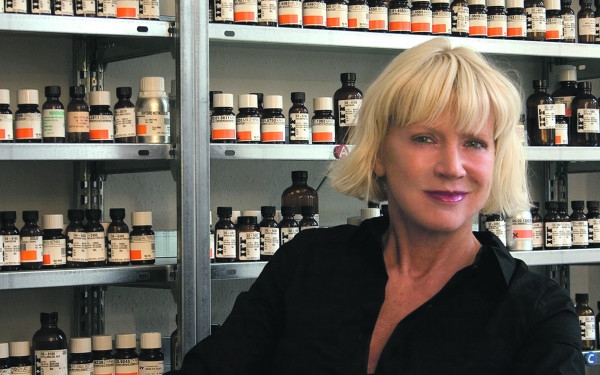Baroque-Back Mountain
Montreal Artists Recreate Lavish 18th-Century Opera House Experience with Modern Twists
Like a Justin Timberlake-Wolfgang Amadeus Mozart hybrid, Montreal classical musician and interdisciplinary artist Aleks Schürmer wants to bring sexy opera back.
After having received a Master’s in 18th-century Historical Performance Practice from McGill, he feels that today’s stuffy renditions of opera are far removed from what they were in their glory days.
“If you’ve ever gone to an opera, a lot of times it’s really boring. It’s really not accessible, and it’s pretty elitist,” Schürmer told The Link in an interview at the Société des arts technologiques, where their latest show Le Pop d’époque is being showcased.
“It’s not accessible financially; it’s not accessible because you don’t necessarily want to sit there and listen to people speak some language you don’t understand.”
But Schürmer said if you turn back the clock a few centuries, the opera house wouldn’t turn down for anything.
“We’re pretty disconnected from this, but three or four hundred years ago, this was culture. This was like going to any kind of show—this was the primary, not just cultural form, but like, social form,” said Schürmer. “If you combined all of cinema, all music, the Internet and social media into one thing, that’s like the 18th century opera. You go there because you want people to see you, and because you want to see that person, and it’s the thing to do.”
Wanting to recapture this lost idea of what the opera house once stood for, Schürmer created the art collective Party Like It’s 1699 with his partner-in-art Frances McKenzie, who received her BFA in Studio Art at Concordia.
Revitalizing opera from its current state as a “dying art form” is the group’s goal: their most recent show, Le Pop d’époque, is a trip through time and space into their otherworldly opera house at the SAT, where both artists currently have a residency.
“We’re pretty interested in trying to figure out ways to create that same spirit. It’s obviously super-anachronistic,” Schürmer said.
The 360-degree screen in the Satosphere, which truly brings the opera house aesthetic to life, allows Schürmer to bathe his audiences in his and McKenzie’s conceptual world of romance, tragedy, sex, art and more.
“You really have to wander around and be compelled to get out of your seat and be a part of that environment. […] There’s people who are in costumes who are audience members, who sort of blend between the audience that is digitized in the digital theatre that we have, and the audience that comes and sits in. But it’s actually weird, because they look like the people that are to-scale that are in the wall.”
Schürmer explained that even the sound in the dome blends dimensions: with over 30 channels of different speakers, he was able to isolate tracks for specific conservations of the virtual opera-goers in his piece. This means that by walking around the perimeter of the dome, show-goers can pick up on many different conversations that the digital 18th-century ghosts are having among the cavalcade of other sights and sounds.
“It usually leaves people mostly slack-jawed,” Schürmer laughed. “If you just look at a picture of the audience, no one is looking at the same thing, and everyone looks like they’re like, ‘What the fuck is happening?’”
Schürmer compared Le Pop d’époque’s experience with an anecdote about one of the first tragedie ballets, when a performance enacted a storm scene and made it rain in the theatre—and on the audience.
“People kind of quite literally lost their shit, they didn’t understand,” Schürmer said.
Response to Schürmer’s modern-day storm-in-the-theatre has been mostly positive, minus a few of the more tightly-wound reviewers who may have lost their wits like those at the tragedie ballet.
“I think that, generally, people are pretty supportive of the things that Frances and I do. I mean, it’s totally nuts, but it’s probably the most normal thing we’ve made,” he laughed.
While the show’s format may be something audiences have never experienced before, the narratives within the show are nearly as old as time itself. Le Pop d’époque showcases “all the juicy, good stories. The stories of forever,” according to Schürmer.
The classic themes of doomed lovers, tragic deaths, and gods harbouring some of humanity’s worst traits are prevalent in Le Pop d’époque.
“It’s always like, the god of the winds decides to be like, ‘Ha ha, let’s just make this guy drown, just ‘cause.’ And then, so, [his lover] will kill herself,” he said.
“And then the moral of the story will be like, you know, the gods might kill you, and love is fickle. I don’t know, it’s weird. […] Most of the time you’re supposed to feel bad about most things,” he said.
Schürmer and McKenzie recruited dozens of fellow Montreal artists to act, sing or dance (or all the above) in their bombastic show, including members from local bands such as Mozart’s Sister and ¡FLIST!.
“In the end, there’s probably over 100 people that we digitized for it. […] That’s what makes it very Montreal, it’s very ‘from-now,’” Schürmer said.
Le Pop d’epoque will be presented at the Satosphere this week as part of the M for Montreal Festival.
Le Pop d’époque & Foodlab Banquet [18+] // Nov. 19, 20, 21 // La Société des arts technologiques (1201 St. Laurent Blvd.) // 7 p.m. // $42.25


_600_375_90_s_c1.jpg)
_600_375_90_s_c1.jpg)

_600_375_90_s_c1.jpg)